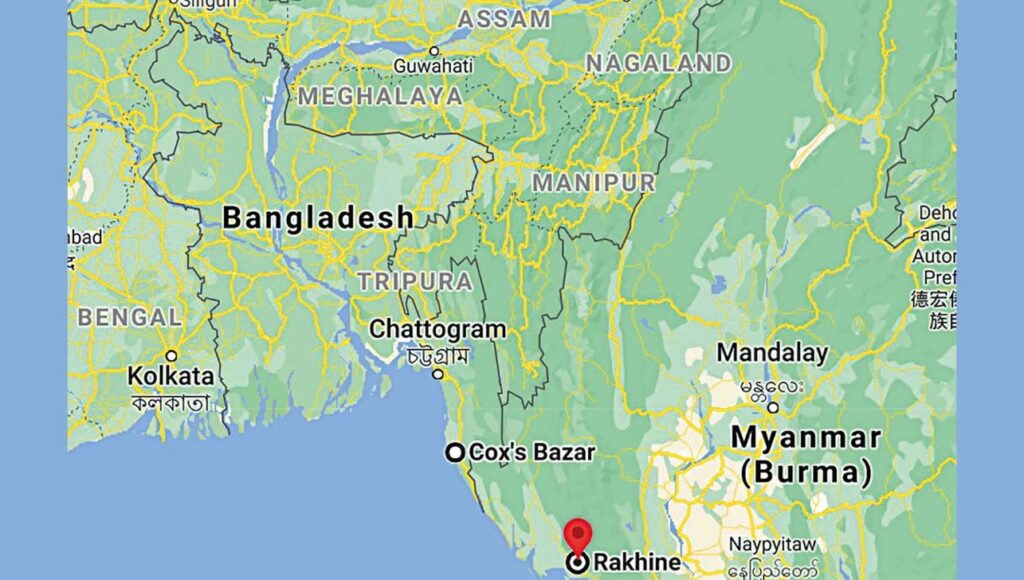Japan wants to enhance the connectivity between Cox’s Bazar of Bangladesh and Rakhine State of Myanmar in order to promote regional economic development, according to Ito Naoki, Japan’s ambassador to Bangladesh.
“Once realised, the increased connectivity will improve the lives of people on both sides of the border,” he said yesterday.
Naoki was speaking on the opening day of a two-day discussion styled, “The Bay of Bengal as connectivity hub in Indo-Pacific region”.
The event was organised by the Centre for Bay of Bengal Studies of Independent University, Bangladesh (IUB).
Referring to regional connectivity, the Japanese ambassador lauded the inauguration of Friendship Bridge over Feni River, which connects Sabroom in India with Ramgarh in Bangladesh.
“It will indeed be a trilateral project including Japan,” he added.
Japan believes that the development of Bangladesh is significant not only to Bangladesh itself, but also to the overall stability and prosperity of the Indo-Pacific region and beyond.
Japan has been developing Bangladesh’s first deep-sea port in Matarbari. The project aims to make Matarbari a free and open regional hub.
Once completed, Matarbari will connect Bangladesh not only to South Asia as a whole, but also to South East Asia and even East Asia, including Japan.
With an aim to boost regional connectivity, Japan has been developing a number of mega infrastructure projects in Bangladesh, such as the Dhaka Metro Rail and expansion of Hazrat Shahjalal International Airport.
These projects are being implemented by JICA under the “Bay of Bengal Industrial Growth Belt (Big-B)” initiative.
Under the Big-B, Japan plays a leading role in promoting “the Moheshkhali-Matarbari Integrated Infrastructure Development Initiative (MIDI)” in Southern Chattogram.
As per the MIDI, deep-sea port and power station projects in Matarbari have been vigorously promoted.
Bangladesh’s location is very important in geopolitical terms as it is an intersection between South Asia and Southeast Asia.
Naoki also touched upon the issues of Rohingya refugees as it is a common and acute concern of this region.
Lasting solutions to these issues are significant not only for Bangladesh, but also for the stability of the entire region, and thereby conducive to the pursuit of a free and open Indo Pacific, he said.
Foreign Minister AK Abdul Momen and numerous diplomats, academicians, students and researchers on regional connectivity participated in the event, moderated by Tariq Karim, director of the Centre for Bay of Bengal Studies at IUB.
Vikram K Doraiswami, high commissioner of India to Bangladesh, said the countries of this region could work together to enhance regional and sub-regional connectivity in the Bay of Bengal area.
For example, the Bay of Bengal Initiative for Multi-Sectoral Technical and Economic Cooperation (BIMSTEC) is an organisation under which countries with maritime facilities and their landlocked counterparts help each other to improve regional connectivity.
Like Japanese Ambassador Naoki, Doraiswami also praised the construction of Friendship Bridge, which stretches about 1.9 kilometres from start to finish.
The connectivity between Kolkata and the northeastern region of India has improved drastically thanks to the construction of this bridge, he said.
The foreign minister said the concept of Indo-Pacific Ocean would help Bangladesh improve its connectivity and investment climate, promote blue economy as well as strengthen its measures against terrorism and other organised crime in the maritime sector.
“Bangladesh looks at the initiatives primarily from a development point of view and therefore considers them complementary, not conflicting or contradictory,” he added.
Manmohan Parkash, country director of the Asian Development Bank, said the Bay of Bengal is a critical economic highway for the world as it handles about 66 per cent of all oil shipments for Japan, China, and India.
Besides, over 33 per cent of the world’s bulk cargo pass through the Bay, indicating that it is a conduit of global integration.
With almost a quarter of the global population living in the region and with a gross domestic product of over $3 trillion, the region is home to some of the fastest economic numbers that the world has seen in recent times.
A recent article in New York Times puts Bangladesh’s development story in perspective.
Other than Bangladesh, landlocked countries like Nepal and Bhutan and the northeastern states of India can all be a part of this story, Parkash said.
Mercy Miyang Tembon, the World Bank’s country director to Bangladesh and Bhutan, said the blue economy has huge potential to foster Bangladesh’s growth as the Bay of Bengal is one of the most resourceful seas in the world.
A lot of income is generated from the area each year from tourism, aquaculture and offshore oil and gas extraction.
More than 30 million people are involved in those businesses at the Bay of Bengal, Tembon said, adding that the future business of a blue economy in the Bay of Bengal would be offshore oil and gas extraction and shipbuilding.
Tenzin Lekphell, secretary general of the BIMSTEC, and Tanweer Hasan, vice chancellor of IUB, also spoke at the event.

